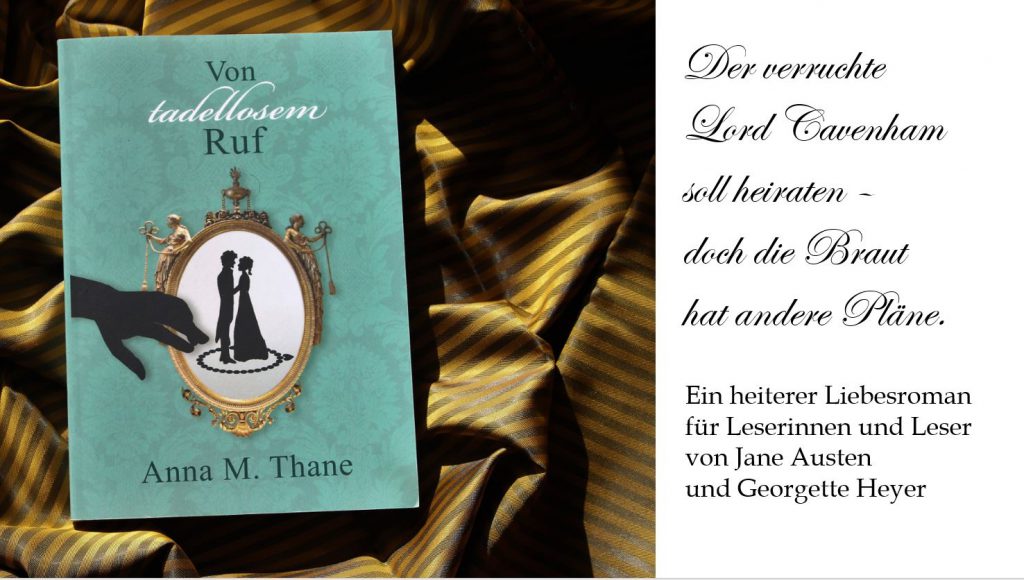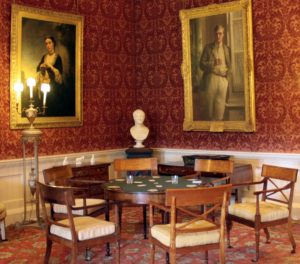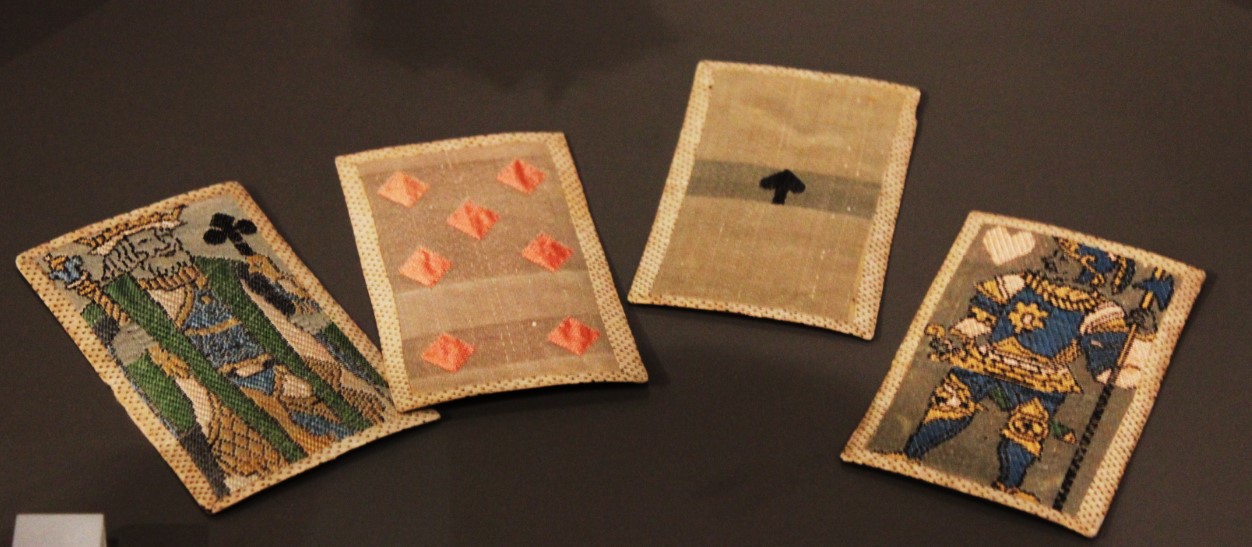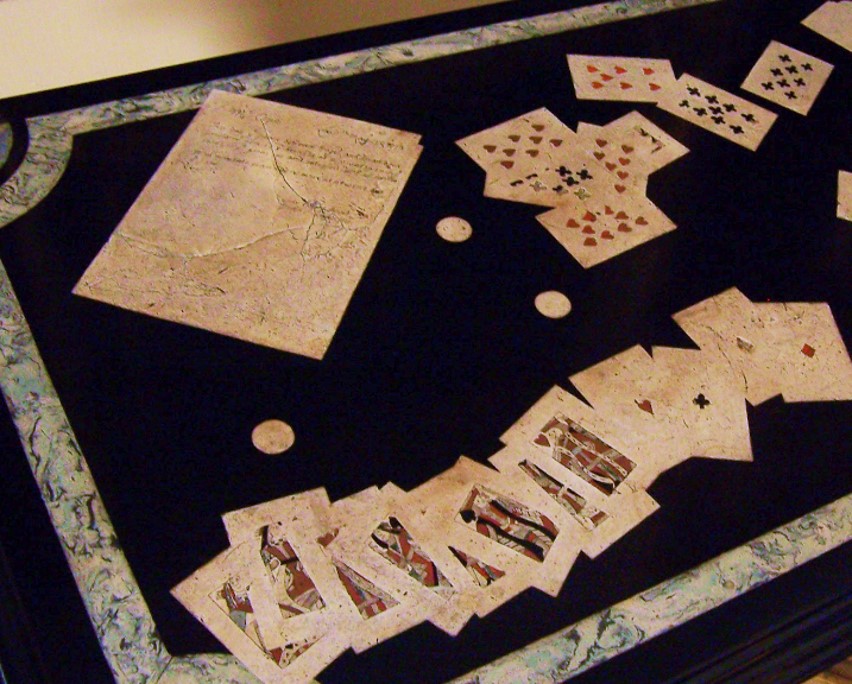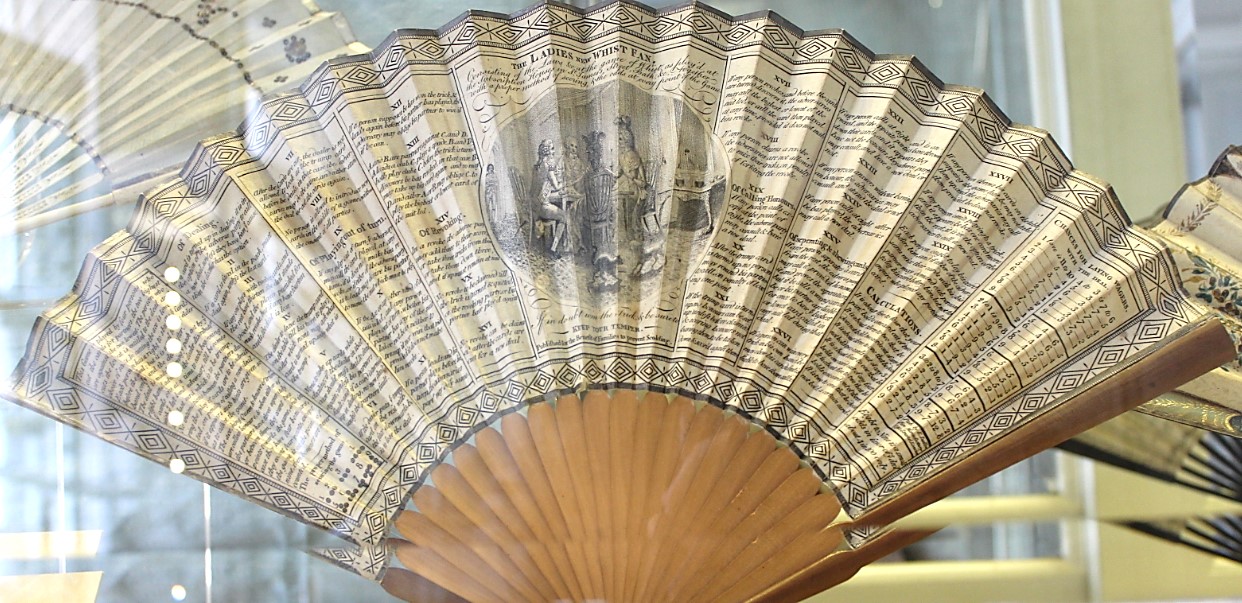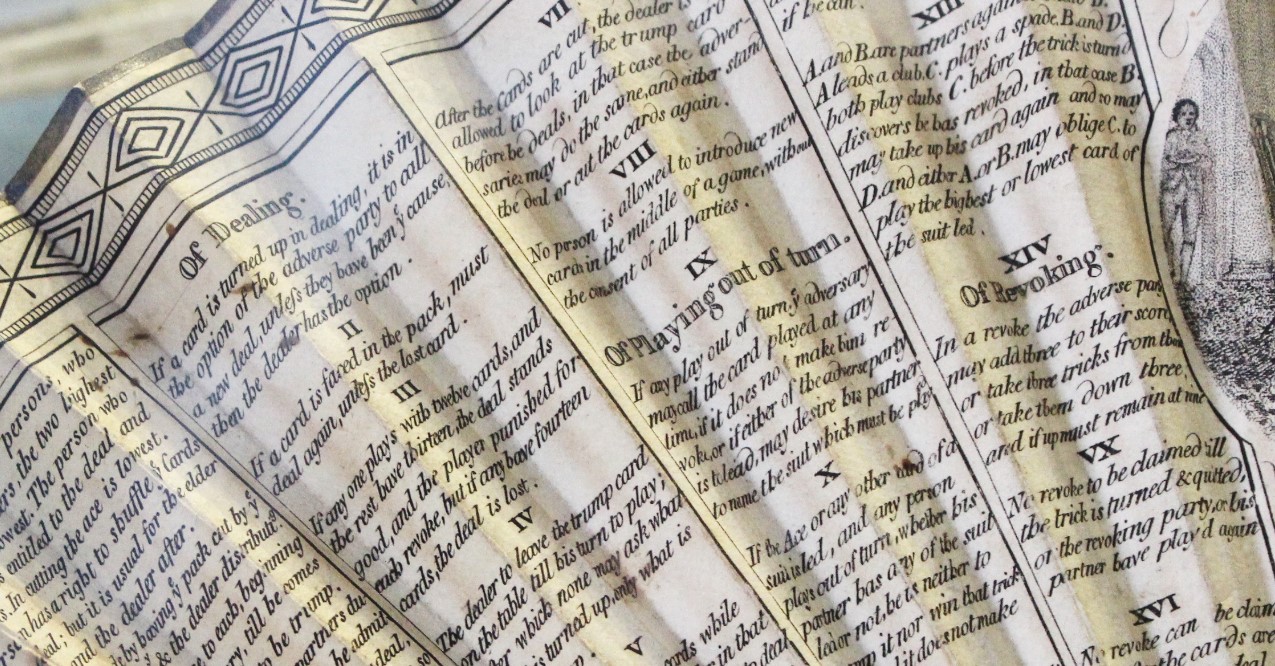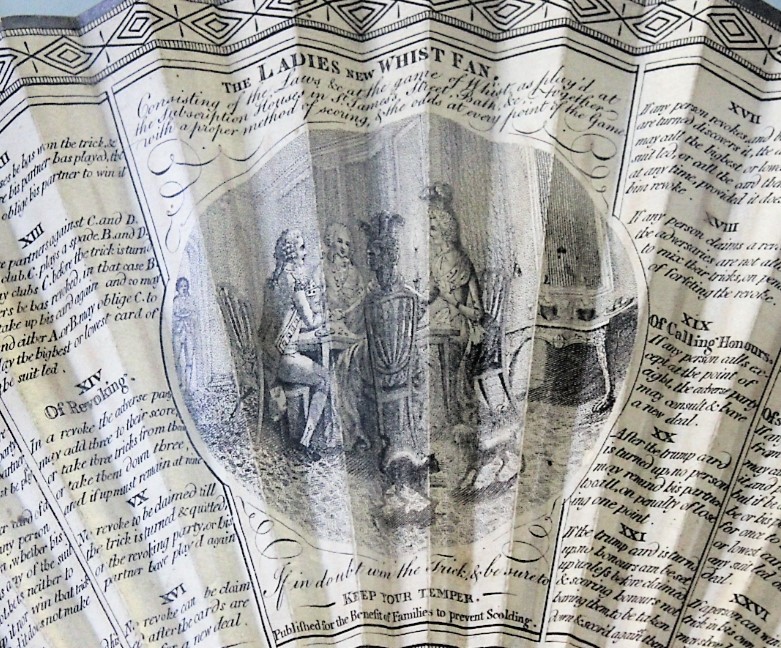Whist was one of the most popular card games in Georgian England. It began its career as a plain game for common men. With the rise of the coffee houses in London, the gentry picked up the game. Reputedly it was Lord Folkestone who brought the game into fashion in high society around 1728, when he adopted it as a challenging strategic card game requiring good memory, sympathetic partnering and psychological acumen.
The rules of Whist were written down in Edward Hoyle’s “ A short treatise on the game of whist” in 1742. As early as this, methods of cheating were discussed. While Hoyle advocated fair play, the stakes at Whist could be high, and thus tempt many to force luck their way. Besides, cheating at whist is very easy.
Whist is played by 4 persons in two partnerships. Though to comment on the cards is strictly against the rules, it wasn’t uncommon that two players of a partnership secretly agreed for a certain action to help them understand what was on the others hand or needed to be played. These included a kick under the table or marking cards – both methods were, of course, forbidden.
The secret language code
It was also widespread to use a code:
- exclamations such as “Come, sir,” (to call a club), and ” My dear sir (to call a diamond)
- secret word could also be
- “indeed” (diamonds)
- “truly” (hearts)
- “upon my word” (clubs)
- “I assure you” (spades”)
Cheating without words
Naturally, as soon as such methods became known, they were banned, but new ones were quickly invented. A clever partnership could easily discover the sorts of cards they had in hand, and which ought to be played first without speaking a word:
- Using the handkerchief during the game: sign of a good card
- Using the Snuffbox during the game: sign of a bad card
- An affected cough (1-4 times repeated) indicated how may honours were in the hand
- Rubbing the left eye: invitation to leas trump
- Cards thrown down with one finger and the thumb: sign of one trump
- Cards thrown down with two finger and the thumb: sign of two trumps
The Art of the Sharper
But how to cheat if you played with strangers? Sharpers didn’t rely on signs and words. They knew the art of shuffling cards, such as
- Floating ideal cards to the top of the deck
- Searching for ideal cards using an overhand shuffle
- Reversing the order of the cards for a bottom deal
- Ordering the cards to fall in your hand
- Dealing yourself – and your partner – the best cards
To avoid cheating by shuffling card, it was advised to not to deal four cards at one. Cards should be dealt round one and one at a time as the securest and best way. However, an accomplished sharper could still deal with this.
Original 18th-century rules of Whist on a fan
This lovely fan from around 1790 features the basic rules of Whist. It is printed in black and has a vignette of two gentlemen and ladies playing cards. It a great original source. Enjoy some photos.
Related articles:
- Burn after Reading: Spying Secrets of the Regency Period
- Fashion Meets Scientific Progress: The “Spy Fan”
- Jane Austen, the Captain and the Smugglers of a Tiny Island
Sources
Bohn, Henry G. Bohn: The handbook of games; 1850 https://archive.org/details/handbookofgamesc00bohn
Cock-Starkey, Claire: The Georgian Art of Gambling; British Library, 2013
Molesworth, Jesse: Chance and the Eighteenth-Century Novel: Realism, Probability, Magic; Cambridge University Press, 2010
Shields, David S.: Civil Tongues and Polite Letters in British America; Omohundro Institute and University of North Carolina Press, 1997
Steinmetz, Andrew: The gaming table, 1870
Cheating at Whist, The Spectator Archive, 5 April 1879, Page 10: http://archive.spectator.co.uk/article/5th-april-1879/10/cheating-at-whist
How to Cheat at Card Games, https://www.wikihow.com/Cheat-at-Card-Games
Photos
Fan Museum, 12 Crooms Hill, Greenwich, London, SE10 8ER, UK
V & A Museums, Cromwell Rd, Knightsbridge, London SW7 2RL, UK
Stourhead House and Garden, Stourton, Warminster BA12 6QF, UK
Article by Anna M. Thane, author of the novel
“Von tadellosem Ruf” (http://amzn.to/2TXvrez)
